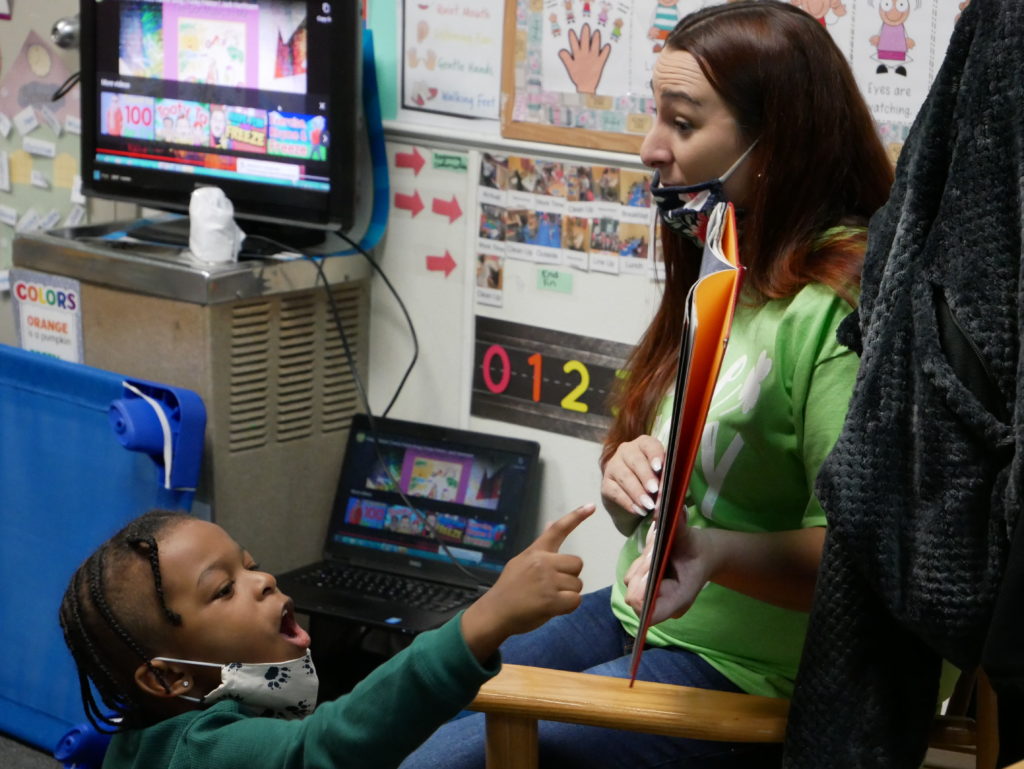A belief in teacher knowledge to turn reading around
Early Bird readers, hello again. Newcomers, welcome! If you were forwarded this email, you can sign up here to receive it every two weeks, and join our conversation on issues facing North Carolina’s young children and those who support them. If you’re already a subscriber, please help us reach more people by sharing this with your friends and co-workers interested in early childhood education.

For the last two years, EdNC has told the story of reading in North Carolina. Despite large investments to improve student outcomes over the last decade, reading proficiency rates have remained largely stagnant. Reporting from my EdNC colleague Rupen Fofaria pointed out inconsistencies with how reading has been taught in classrooms across the state. Teachers often lacked training on the science of reading, a body of research on how students learn to read.
A new state law, passed this year, is aimed at changing that. In Fofaria’s latest on the state’s work to begin implementing the law, he writes that the statute “is premised on the belief that teacher knowledge will help kids better than any curriculum or program.” That’s why folks from across institutions are partnering to ground teacher preparation coursework and classroom experience in scientific research.
In the UNC System, which trains 40% of the state’s public school teachers, educator preparation programs are conducting self-audits in their teaching of key reading concepts. By 2026, the system has set concrete goals for increasing teacher candidates’ level of preparation in teaching reading, and for decreasing racial disparities in preparation.
And in the community college system, administrators and faculty are creating literacy courses grounded in the science of reading, which will be embedded into the new teacher preparation programs coming to 52 of the state’s 58 colleges.
There are bright spots in North Carolina that leaders are now looking to learn from and replicate. One example is Lenoir-Rhyne University’s Literacy Center, which gives future teachers real-world experience through a partnership with Hickory City Public Schools.
We all know learning to read doesn’t start in kindergarten. I’ll be looking at how pre-K fits into the state’s plans soon. And I’ll be tuning into this conversation on September 8 from Book Harvest on new research from their home visiting program Book Babies, which provides families with books and literacy coaching in the first five years of life.
If you’re an early childhood educator, how would you like to be part of the conversation on improving reading proficiency in our youngest learners? Reply to this email and let me know.
Early Bird reads: What we’re writing
Relationships and partnerships: How DPI and N.C.’s three higher ed systems are teaming up for literacy
“We have this expectation of the critical things that a teacher of reading needs to know and be able to do,” said Laura Bilbro-Berry, who directs the UNC System educator preparation program (EPP). “They’re going to get that within their ed prep program, and then our K-12 partners are working with in-service teachers to get the science of reading into those classrooms. So we feel like it’s a really good continuum of support.”
Teachers want better preparation in reading instruction. In the UNC System, it’s getting personal
By fall 2022, every UNC System educator preparation program will align its instruction with a Literacy Framework the system finalized in March. The framework is the centerpiece of the system’s efforts to ground coursework in the science of reading. Programs are using that document to conduct a self-audit of their curriculum.
In the first phase, completed in May, programs assessed alignment with three essential components: phonemic awareness, phonics and decoding, and fluency. For the second phase, which ends in October, the programs will examine vocabulary and reading comprehension. In the final phase, which ends in December, they will assess concept-to-print, oral language, and writing.
Community colleges will start preparing future teachers this year. The science of reading figures prominently in the plans
At 52 out of the 58 community colleges, students will have two new degree options: an associate in arts and an associate in science in teacher preparation.
One of the four required education courses for the associate’s degree is Literacy Development and Instruction, EDU 279, a four-credit-hour study in the scientific research about how kids learn to read.
Future teachers get experience. Striving readers get help. Check out this teacher prep lab in an elementary school
Lenoir-Rhyne University is recognized by the National Council on Teacher Quality as a standout program for preparing future reading teachers. Check out this video on the lab, which allows its students to practice reading instruction by tutoring students at Southwest Primary Elementary in Hickory Public Schools.
Your take, for goodness sake: EdNC perspectives
Perspective | North Carolina’s children and families can’t wait for a budget
Amy Cubbage, president of the North Carolina Partnership for Children (Smart Start), reflects on the current moment for young children and families in North Carolina.
“A year and a half of pandemic life has been a struggle for all of us, but especially for families with young children. Concerns about basic needs — staying healthy, keeping a job, and paying bills — are compounded by fears about finding child care, juggling work and young children at home, and meeting children’s developmental and social needs.”
Cubbage calls on state leaders to invest in policies that would make a difference.
“There’s a lot at stake for young children and families in North Carolina. With the conference budget process underway, we encourage our state policymakers to work together and across parties to pass a state budget that responds to families’ needs and moves our state forward. The pandemic has brought unprecedented challenges but also unprecedented opportunities to support children and families. We can’t miss this moment.”
Perspective | Ready, set, go? A guide to ensuring kindergarten readiness
Kaite Yunker, an academic coach working with elementary school teachers in Durham, offers some tips to consider for parents as children start kindergarten:
- Practice routines and basic skills
- Use language that supports the transition
- Familiarize yourself with school protocols
- Be as upfront and honest as possible about what to expect
In other early learning news: What I’m reading
How coaches for teachers could improve reading instruction, close early academic gaps - From The Hechinger Report
Desperate for teachers and staff, some rural Colorado schools are offering their workers child care - From Colorado Sun
Babies and Toddlers Spread Virus in Homes More Easily Than Teens, Study Finds - From The New York Times
Child care providers have helped each other apply for grants during the pandemic. Will the increased funds be enough? - From Milwaukee Journal Sentinel
Research & Resources: Let's talk progress and peril in child care
It’s a complicated moment for child care. An historic infusion of federal funds is on its way to child care providers and families across the state and country to help them recover from the pandemic’s disruptions. Yet experts say that won’t fix longstanding issues. One of the biggest — which has worsened in recent months — is an inability to staff classrooms.
An August report from the National Association for the Education of Young Children (NAEYC) shares insights from survey results from this summer of early education programs of different kinds.
“NAEYC urges states to continue to make priority investments in the early childhood workforce as the key driver of increased quality, access, and equity in the present and future,” the report’s introduction reads.
Between June and July 2021, 327 North Carolina programs responded — 58% were child care centers and 18% were family child care homes. Here’s what they said:
- 82% of programs were experiencing a staffing shortage; as a result, 47% of programs were serving fewer children.
- 50% of programs said it’s harder to recruit teachers because of the pandemic. 75% cited compensation as the biggest recruitment obstacle.
- 22% of programs, inclusive of all settings, said they were considering leaving their program or closing their family child care within the next year. This percentage rises to 32% of minority-owned businesses and 60% for those who have been in the field for one year or less.
- They were operating at an average of 76%, with 66% of enrolled children attending on a given day.
- 31% of centers and 53% of homes were able to reduce pandemic-related debt from relief funds they had received.
- 64% of programs of both types said they received an increased compensation during the pandemic. 32% of educators in both settings said they were worried about losing public benefits if their compensation were to increase.


